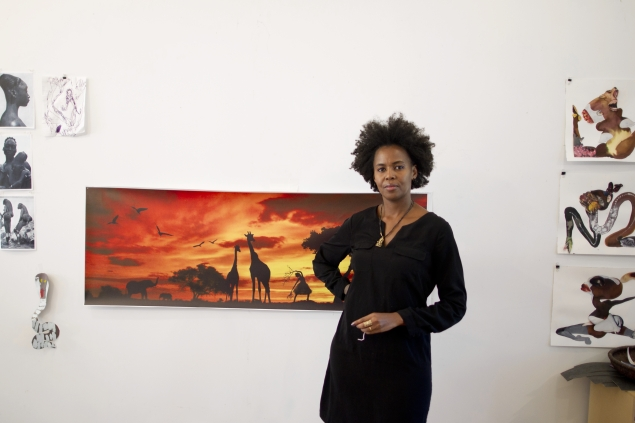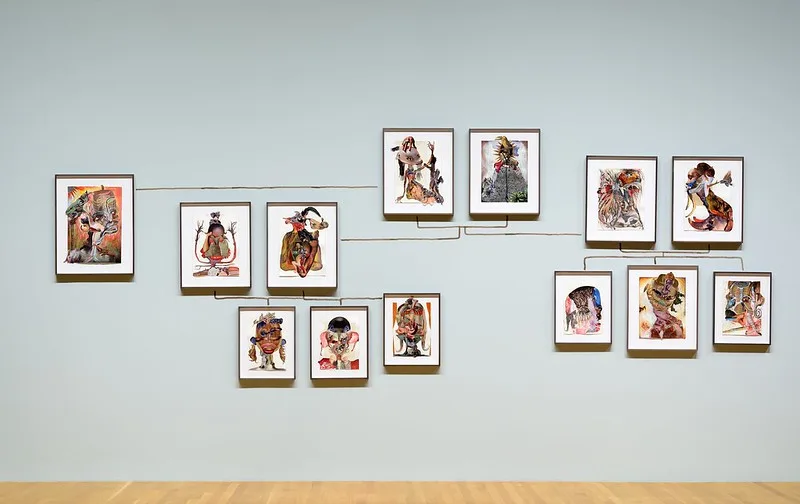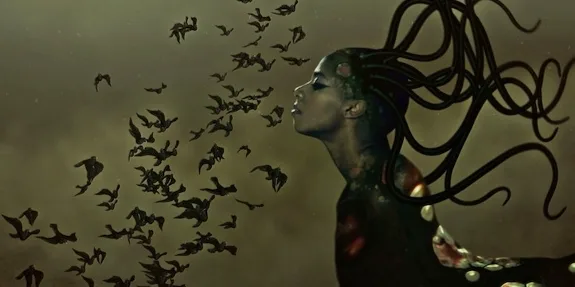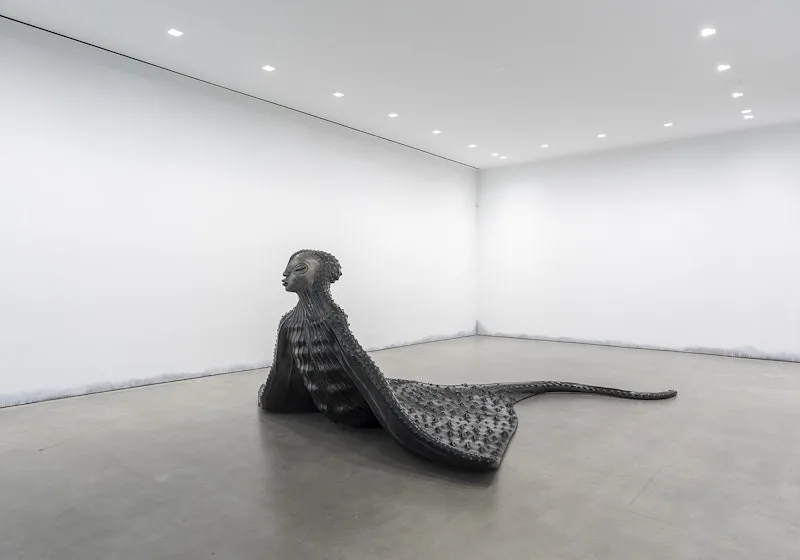Wangechi Mutu is a Kenyan contemporary visual artist best known for certain recurrent themes in her work. These themes interrogate feminism in view of gender constructs and self-image. They also traverse race, cultural trauma and western consumerism in relation to artificial environmental deterioration. Her artistic oeuvre covers an expansive range of mediums of pastiche-like collages, paintings, sculpture, bricolage, film and performances.
Her works which focus heavily on distorted representations of female bodies, infuse futuristic and grotesque elements. As expected, they have graced quite the number of exhibitions. The following creations by Wangechi Mutu include her most iconic ones amongst others.
Family Tree (2012)
This is a 13-piece suite with mixed media collages on paper focusing on woman-centric creation mythology. This is in line with her Kikuyu cultural background. Although this body of work examines colonialism and the carving up of Africa from a medical perspective, Wangechi Mutu also expresses her interest in transformation as a crucial way to ensure survival.
The End of Eating Everything (2013)
Her first ever animated video, “The End of Eating Everything” was the product of a collaboration with the recording artist, Santigold. The coloured video is about 8 minutes long. Here, Wangechi Mutu explores the excessive consumerism culture of human beings and the adverse result of this harmful compulsion to the earth. The video begins with a partial image of Santigold’s head with tendril-like hair and a flock of black birds. She tries to consume them as the frame widens to reveal a distorted and diseased form.
The Seated Series: The MET Facade Commission (2019)
Since the completion of the Metropolitan Museum of Art (venue of the annual MET Gala), the alcoves facing the Fifth Avenue had remained empty. This was until 2019, when the Met commissioned Wangechi Mutu to fill them with her works.
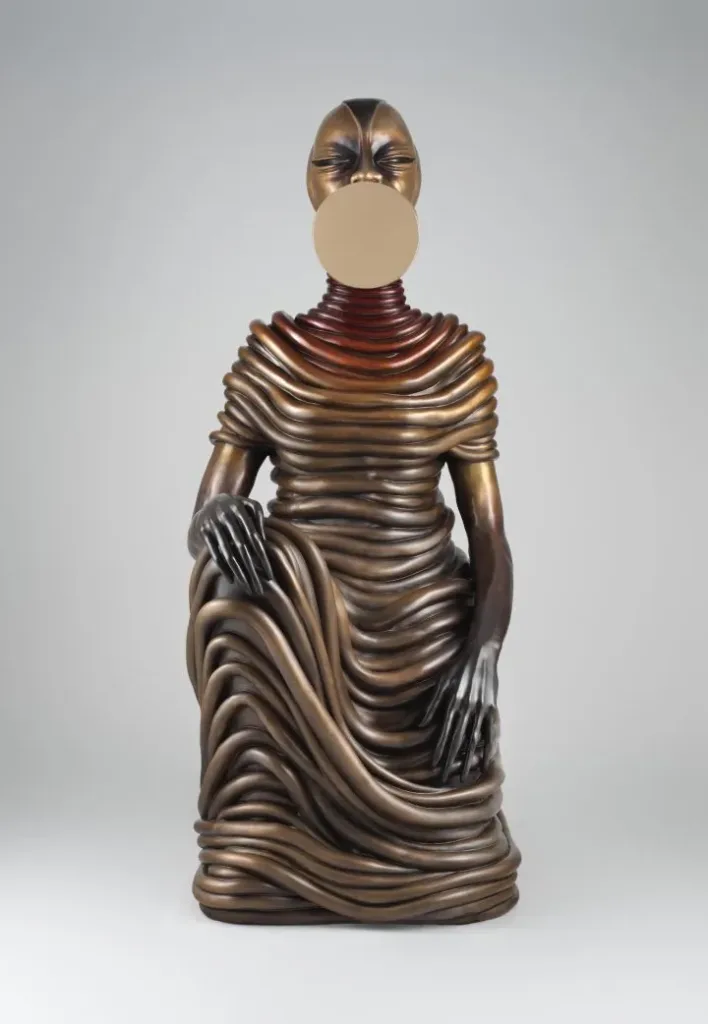
In response to this call, she created the Seated Series consisting of 4 bronze female figures. Her unique approach is unlike the trend with Greek temples of old. Back then, artists portrayed female structures as support systems usually of roofs. Such portrayal was intended to be a metaphoric indicator of the weight of societal expectations women shoulder. However, Wangechi Mutu takes on a different approach and lets the figurines stand alone and unburdened in a regal fashion.
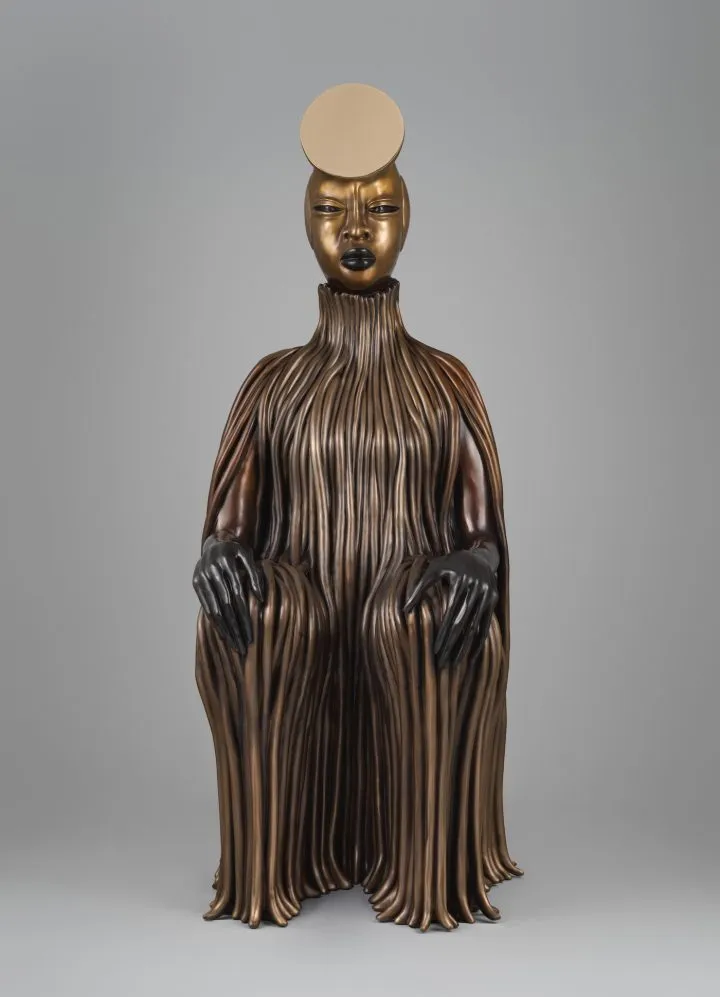
She is the first artist the Metropolitan Museum of Art’s Facade has ever featured.

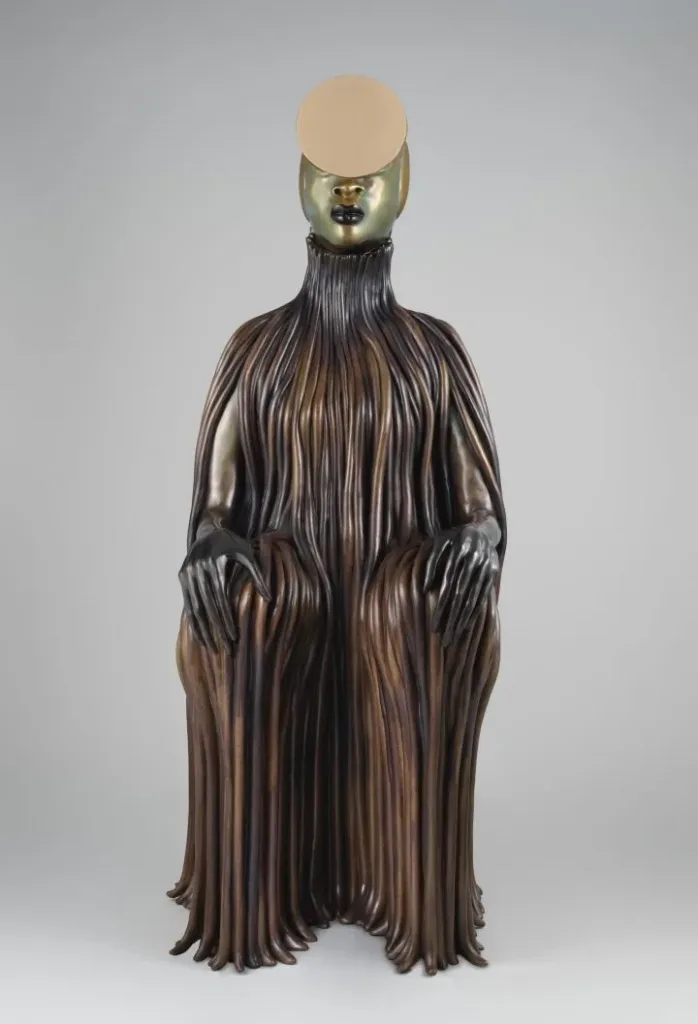
MamaRay (2020)
The “MamaRay” is an otherworldly Afrofuturistic figure which resembles a Manta ray, has a humanoid face and a serpentine tail. It is the Nasher Museum of Art’s first sculptural commission.
Exploring all her iconic works reaches far beyond the borders of this page. Wangechi Mutu has many more pieces worthy of note. Therefore, if this Feminist Artist intrigues you, it would not hurt to look up her book. The title is “Wangechi Mutu: I am Speaking, Are You Listening?”
The book details many of her works in tandem with relevant commentary for a better understanding.

